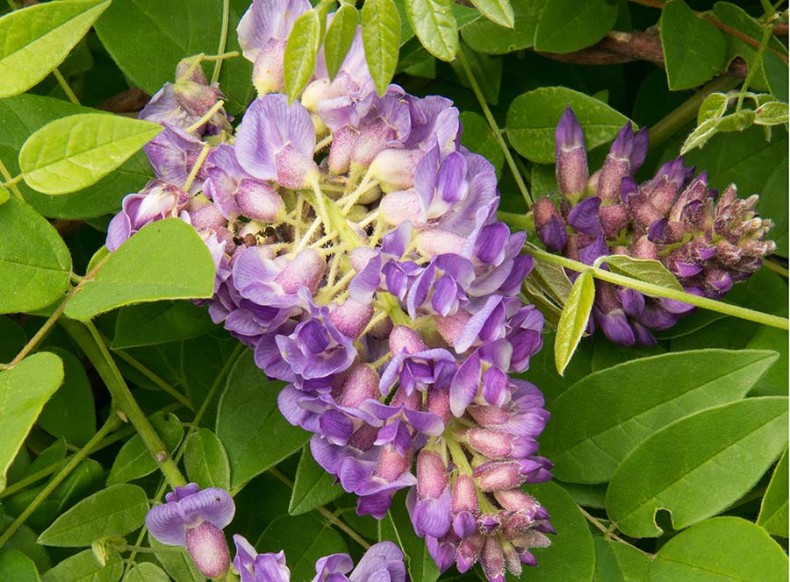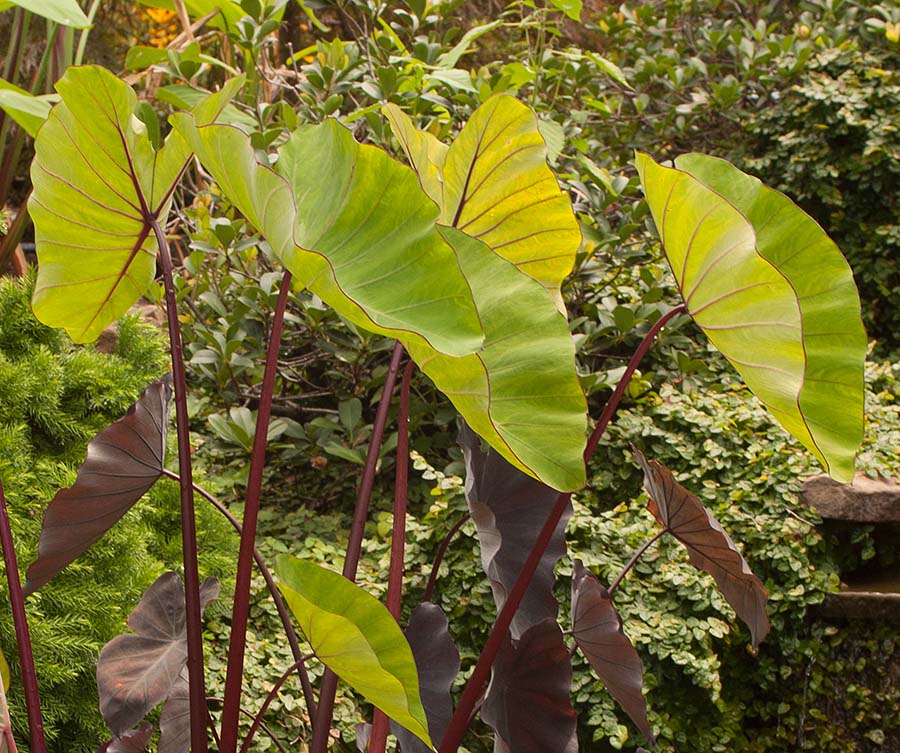Born in the USA: Native Wisterias
Plus Garden To Do’s for March
By L.A. JacksonLongwood Purple Wisteria (photo by L.A. Jackson)
The lovely lure of a mature wisteria in spring bloom is undeniable, but such a sensational show usually comes from either Chinese wisteria (Wisteria sinensis) or Japanese wisteria (W. floribunda), both aggressive vines that can quickly stretch beyond 60 feet. And, by way of seeds and underground runners, they can also easily escape the garden to overwhelm native habitats, girdling trunks and shading or breaking branches as they spread. Not surprisingly, both have been labeled invasive in the Southeast.
However, there is a way to enjoy wisteria without worrying about it wandering away — consider selections of American wisteria (W. frutescens) or Kentucky wisteria (W. macrostachya), which are both native to this country. These indigenous alternatives tend to restrain their reach to around 30 feet or shorter, and are less inclined to over-propagate and swallow the countryside. Listed below are selections of wisterias (to borrow heavily from Bruce Springsteen) born in the USA. They can be found for sale at local garden shops or online, and will accent rather than attack your landscape this spring.
- Amethyst Falls. An American wisteria, this cultivar has really caught the attention of Southeast gardeners. Although its bluish-purple flower racemes are a modest (compared to its Asian cousins) 6 inches long and only mildly fragrant, this vine will not keep a homeowner up at night wondering if it has covered the garage yet.
- Longwood Purple. Another American wisteria, it exhibits deeper purple blooms than Amethyst Falls and tends to have bushier foliage. Typical of all wisterias, Longwood Purple will flower best in a sunny location.
- Blue Moon. A Kentucky wisteria selection, this vine shows off fragrant dangles of blue-violet blossoms that can be up to a foot long. And Blue Moon is very hardy — it will take temperatures down to minus 40 degrees!
- Nivea. Looking for a divine vine to add to a white garden? The tightly clustered blooms of this American wisteria soften the species’ typical purple blossoms to an elegant white hue. The Kentucky wisteria Clara Mack also displays flowers in a lighter shade of pale, but its racemes are longer, stretching up to a foot in length.
Garden To Do’s for March
- To prep your backyard pond for better displays this spring and summer, now is the time to fertilize water-loving marginal plants such as rose mallow, cardinal flower, spike rush, dwarf papyrus, colocasia and sweet flag. For the most dazzle, apply nutrients every five to six weeks through the growing season.
- Bulbs such as daffodils, spring starflower, species tulips, hyacinths and crocus can naturalize in Carolina gardens, and they will become established faster if their energy-absorbing leaves are allowed to fade from green to brown before pruning.
- Can’t wait to get growing in the veggie patch? At the beginning of this month, break out the plants and seeds of such cool-season vegetables as lettuce, kale, onions, spinach, potatoes, sugar snaps and radishes.
- While mulch is a beneficial addition to garden beds, hold off on covering areas where spring and summer annuals will be grown. Leave them bare to the warming sun so the soil temperature will rise to a comfortable level before introducing heat-loving seeds and young plants in April.
- The best mint for the garden is the contained mint. Unless used as a fragrant, rampant groundcover, plant mint in a pot to restrain its ability to run crazy through the garden.
- Middle of the month is prime planting time for beets, broccoli, cauliflower and Chinese cabbage.
-
Share this story:




